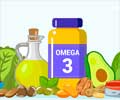Trans fats raise low-density lipoprotein (LDL or “bad”) cholesterol and lower high-density lipoprotein (HDL or “good”) cholesterol.
Trans fats are a cholesterol double whammy. Also known as trans-fatty acids, trans fats raise low-density lipoprotein (LDL or “bad”) cholesterol and lower high-density lipoprotein (HDL or “good”) cholesterol.
Experts consider trans fat the worst type of dietary fat. Trans fat contributes to heart disease by promoting low-grade inflammation in the blood vessels. And, trans fats are associated with a higher risk of developing type 2 diabetes.The April issue of Mayo Clinic Women’s HealthSource provides information to better understand the health risks posed by trans fats as well as tips to avoid consuming them.
Trans fats are formed when liquid oils are made into solid fats such as shortening and hard margarine. Because of their long shelf life and appealing texture, synthetic trans fats have been favored ingredients in commercially baked goods such as cakes, cookies, crackers and crusts. Commercially fried foods, such as doughnuts and french fries, also often contain trans fats.
The use of trans fats is starting to change. New York City made headlines when it banned trans fats in restaurants. Other cities are considering going trans-fat free. Some food manufacturers are reducing or eliminating trans fats in their products.
But avoiding trans fats still takes diligence. The American Heart Association recommends limiting trans fats to less than 1 percent of daily calories. That’s just 20 calories (2 grams) in a 2,000-calorie per day diet. That amount can easily come from naturally occurring trans-fatty acids in dairy products and meat from cows, goats and sheep.
At the grocery store, product nutrition labels contain trans fat information. However, a product that has less than ½ gram of trans fat can be labeled as zero. Eating modest amounts of these products easily can add up to more than 2 grams of trans fats. Keys words such as “shortening,” “partially hydrogenated” or “hydrogenated” indicate the food contains trans fats even when the chart on the label indicates none. Many restaurants continue to use trans fats for deep-fried foods. Grilled or baked foods are more likely to be trans-fat free.
Advertisement
SRM/B











